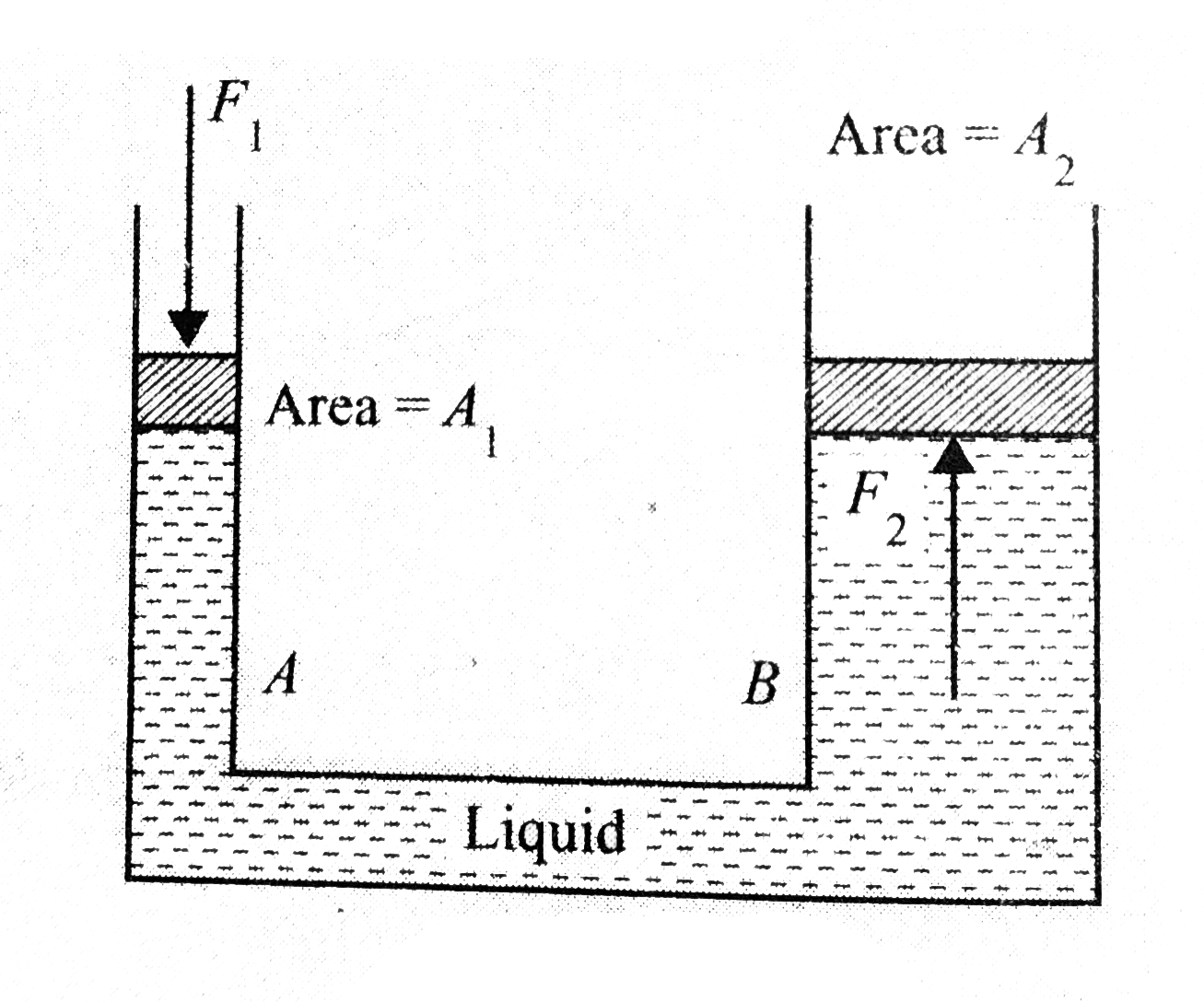In a hydraulic press used for compressing cotton the area of the piston is and the force exerted along the piston rod is . If the area of the larger cylinder is , find the pressure produced in the cylinder and the total crushing force exerted on the bale of cotton.
The correct Answer is:
To solve the problem, we will follow these steps:
Step 1: Calculate the Pressure in the Smaller Cylinder
The pressure P produced in the smaller cylinder can be calculated using the formula:
P=FA
where:
- F is the force applied (200 N),
- A is the area of the piston (0.1 m²).
Substituting the values:
P=200N0.1m2=2000N/m2(or Pa)
Step 2: Use the Pressure to Find the Total Crushing Force in the Larger Cylinder
Since the pressure is transmitted equally in a hydraulic system, the pressure in the larger cylinder will also be 2000 N/m². We can find the total force F exerted on the bale of cotton using the same pressure formula:
F=P×A
where:
- P is the pressure (2000 N/m²),
- A is the area of the larger cylinder (0.8 m²).
Substituting the values:
F=2000N/m2×0.8m2=1600N
Summary of Results
- The pressure produced in the cylinder is 2000 N/m².
- The total crushing force exerted on the bale of cotton is 1600 N.
---
The pressure P produced in the smaller cylinder can be calculated using the formula:
P=FA
where:
- F is the force applied (200 N),
- A is the area of the piston (0.1 m²).
P=200N0.1m2=2000N/m2(or Pa)
Since the pressure is transmitted equally in a hydraulic system, the pressure in the larger cylinder will also be 2000 N/m². We can find the total force F exerted on the bale of cotton using the same pressure formula:
F=P×A
where:
- P is the pressure (2000 N/m²),
- A is the area of the larger cylinder (0.8 m²).
F=2000N/m2×0.8m2=1600N
- The pressure produced in the cylinder is 2000 N/m².
- The total crushing force exerted on the bale of cotton is 1600 N.
Topper's Solved these Questions
Similar Questions
In a simple hydraulic press, the cross sectional area of the two cylinders is 5×10−1m2 and 10−2m2 respectively. A force of 20N is applied at the small plunger.
a. What is the pressure produced in the cylinders?
b. What is the thrust exerted on the large plunger?
c. How much work is done by the operator, if the smaller plunger moves down 0.1m?
 View Solution
View SolutionThe sum of radius of the base and height of a cylinder is 37m. If the total surface area of the cylinder is 1628m2, find the curved surface area and volume of the cylinder
View SolutionIn a hydraulic press, the diameters of two pistons are 6 cm and 60 cm. The force exerted on the larger piston is n× 7200 kg wt if 100 kg wt is placed on smaller piston. Find the value of n.
View SolutionA car is lifted by a hydraulic jack that consists of two pistons. The diameter of the larger piston is 2 m and that of the smaller piston is 50 cm. If the force applied on the smaller piston is 240 N, find the weight of the car.
View SolutionA car is lifted by a hydraulic jack that consists of two pistons. The diameter of the larger piston is 2 m and that of the smaller piston is 50 cm. If the force applied on the smaller piston is 240 N, find the weight of the car.
View SolutionIf a pressure of 378 atm is exerted on a circular cross section of radius 0.1 mm, what is the force exerted on the area?
View SolutionThe pressure of a gas contained in a cylinder with a movable piston is 300 Pa. The area of the piston is 0.5m2. Calculate the force that is exerted on the piston.
View SolutionTwo pistons of hydraulic press have diameter of 30.0cm and 2.5cm, find the force exerted on the longer piston when 50.0kg wt. is placed on smaller piston.
View SolutionThe length of an iron cylinder is 0.8 m and the area of cross sectionis 0.45m2. Find the mass of the cylinder if its density is 7800kg/m3.
View SolutionThe area of the smaller piston of a hydraulic press is 1cm2 and that of larger piston is 22cm2. How much weight can be raised on the larger piston by a 200kg f exerted on the smaller piston?
View Solution

